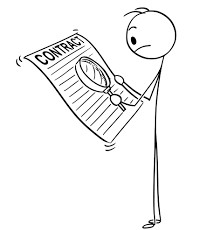This week, we examine the Employment Relationship, the example of this is a contract where an employer hires a worker for an agreed price (wages). However, it is not as simple as described above, this is due to 3 reasons.
1: A worker does not enter into the contract in a free and easy way, the employer can do all the choosing and the worker is generally in a weaker position as they need the work for wages etc.
2: By entering the contract it becomes a fusion of power with the employer commanding and the worker obeying.
3: There is a “work -wage bargain” or the “effort bargain” where the quality and quantity of work is variable which leads the relationship open ended or “indeterminate” as the parties can’t foresee all the eventualities that may occur in the workplace (Fox, 1974). This leads to the characteristics of the relationship being defined by “market Relations” and “Managerial Relations”.
Market Relations determine what the rate of pay for the work and also what holiday’s bonuses etc are given.
Managerial Relations are concerned with quantity, quality and how the work is to be done and the sanctions for not adhering to these.
In this class, we also mention who the actors are in the employment relationship- workers and unions, the state and employers and managers, this will discuss in more detail throughout the module.
We focused on the rules governing the employment relationship- Law, individual bargaining, custom and practice, managerial prerogative and Collective Bargaining.
We gave examples of each of the above (see slides) and then we focused on Collective Bargaining and the importance of collective bargaining for Trade Unionists. We spoke again about the two types of agreement as a result of Collective Bargaining- substantive and procedural, see examples of each in the table below:
Reference:
Fox, A. (1974) Beyond Contract: Work, Power and Trust Relations, Faber & Faber, London
This week’s Materials:
The PowerPoint slides for this week’s class are available here
(Video to follow)
Please read the following excerpt (pp. 4-11) from Part 1 Introducing Employment Relations from the below book by Steve Williams
Reference: Williams, S (2017) Introducing Employment Relations a critical approach, 4th edn, Oxford: Oxford University Press
Reference. Bloodworth, J. (2018) Hired: Six Months Undercover In Low Wage Britain, London: Atlantic Books
 Please watch the below YouTube video on Collective Bargaining for next week’s class.
Please watch the below YouTube video on Collective Bargaining for next week’s class.


